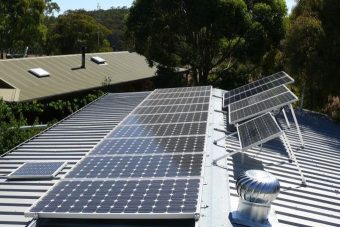
A 190-year-old Jain temple at Byculla is the latest addition to the growing list of religious and educational institutions and housing societies, who are harnessing solar energy for an eco-friendly future.
Sheth Motisha Jain Temple, spread across two acres, installed a 37.5 kilo-watt (KW) power rooftop solar system with 115 panels earlier this month, which will help the management save Rs8 lakh on electricity bills annually. The system will power lights and fans along the pathways, bhojanalaya (mess), storerooms and guest accommodations for devotees.
The trustees who took up the initiative claimed theirs was first temple in Byculla to which harnessed solar energy. “With soaring temperatures, electricity consumption has increased. This electricity is generated at plants that use coal, gas or oil to generate electricity. The process releases harmful chemicals into the air and adds to the pollution,” said Kiranrajji Mangalilalji Shah, chairperson, Sheth Motisha Jain Religious and Charitable Trust.
“Each system has advantages and disadvantages, but renewable resources do not exploit any exhaustible resources. So we decided to rely on solar energy to produce electricity”, he added.
So far, about 20 religious institutions in the city have switched to solar power.
Other trust members added that more panels will be installed by the year-end. “The present installation is the first phase of the project. Our aim is to convert the entire campus into solar power zone. We are happy to give something back to the society and achieve our goal of maintaining an environmental balance,” said Jagdishchandra Chandulalji Mehta, managing trustee.
The setup installed atop the building, which provides lodging facilities to devotees, on the temple premises on average generates 160 kilowatt hour (kWh) electricity per day. A Mumbai house with two bedrooms, on an average, uses 8 to 10 kWh electricity daily.
“We first want to test the system for three months before installing more panels in the phase II. During summers, the power generated is expected to be much more. We are using two German inverters to produce electricity in the first phase,” said Partth Kothari, company partner, Appsolar LLP, a private company that installed the project.
The trust has also installed a net-metering system, which allows surplus power generated by solar to be exported back to the grid and any deficiency is imported from the grid. “The benefits will be reflected every month in the temple’s electricity bills,” said Ghaverchandji Jivrajji Sanghvi, trustee, adding that the trust spent Rs 26 lakh to install the system with the help of donations from devotees. “We expect to recover this in the next three years.”
In the phase II of the project, the trust wants to convert the entire temple area into a green zone by planting fruiting trees along the periphery and within the temple complex.
Satish Gavai, additional chief secretary, state environment department, said, “We congratulate the different religious groups that have come forward and adopted renewable energy means to produce electricity. Religion can be one of the strongest sources of motivation for people to adopt green practices. These initiatives will encourage devotees to adopt such practices and contribute towards protecting the environment.”
Source: hindustantimes.com

